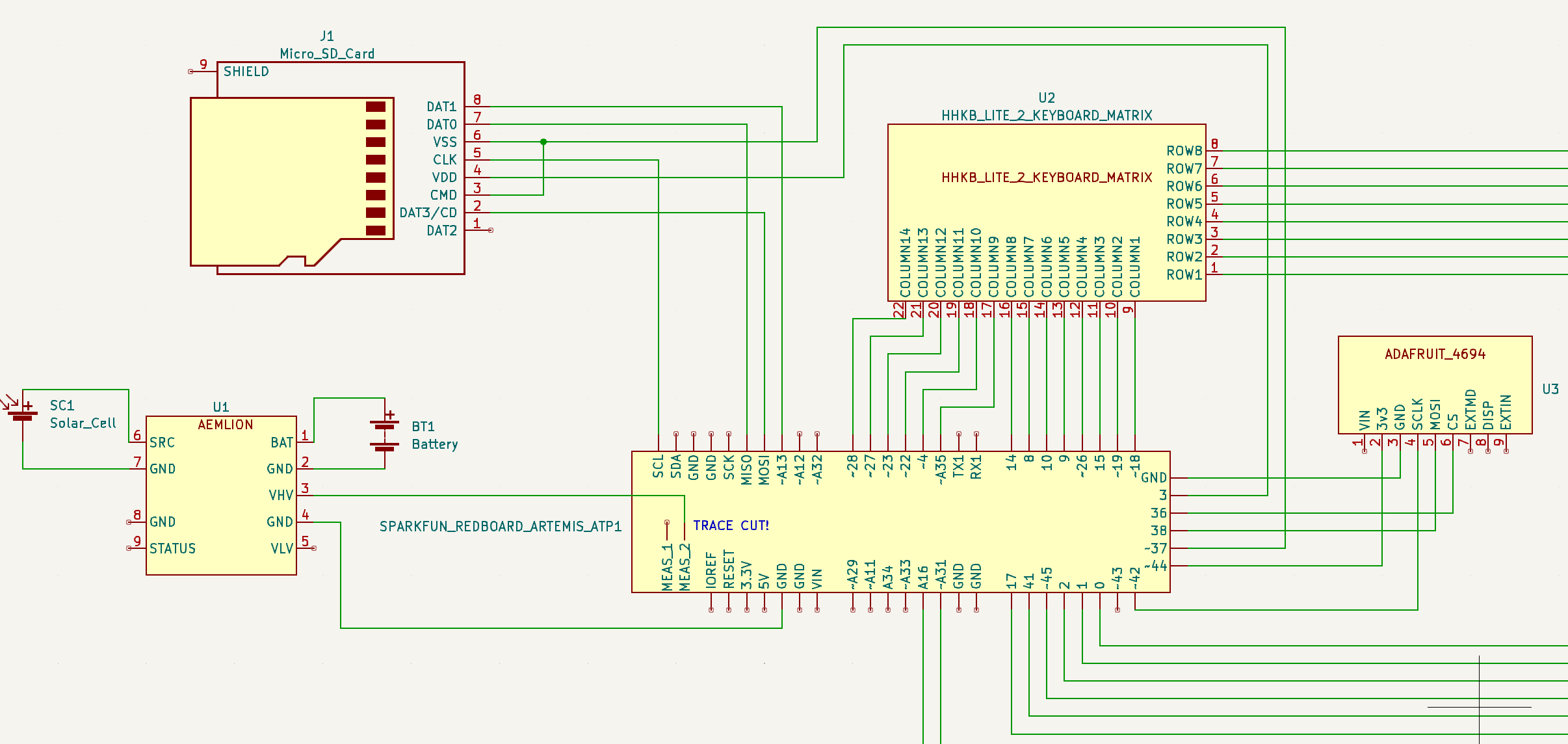Since the last update, I've downloaded KiCad and learned enough(?) to create a basic schematic for the project, which you can now find under the "files" section!
I had to make my own symbols, I guess it's unusual to make a schematic for development boards wired together like this. But still it should be enough to be able to convey how it's all connected.

I've also made my WIP, learn-as-I-go style TinkerCAD designs for the case and screen holder public:
https://www.tinkercad.com/things/igAFacjZWDP
https://www.tinkercad.com/things/jHrsHk9PIVb

The bottom and top need to be printed in two parts to fit on my 3D printer bed - which makes me wish I had a bigger one ...I would definitely recommend printing the screen holder as the flex cables for the screen is fragile and won't survive long unprotected (at least on my desk, which is a mess where things get pushed around frequently).
I've tried bringing the current version of the PotatoP around with me in my backpack, which has confirmed two things:
The first: It's fun to bring it around with me to show off and hack on, and I wish I could do it all the time.
The second: It's currently too fragile for me to actually do that. Wires keep getting disconnected, the case pops apart, the keyboard shifts out of position and stops working until I disassemble and reassemble it. It's also pretty thick, taking up most of the space in my backpack when I do bring it, and as it doesn't have a proper hinge for the screen, I have to carefully and separately pack the screen and hook it up each time.
So my current priority is to keep teaching myself more KiCad, and design a PCB with all the necessary components such as the stand-alone Artemis module, but also possibly a (separate?) custom mechanical keyboard PCB with a similar layout - and a new, much smaller and slimmer 3D printable case for it all.
This should make the project much smaller, more robust, and much easier to reproduce as you won't need to source and dismember a very specific and somewhat rare keyboard to build it. It should also make it a lot cheaper to make one. It might even be possible to have produced a pre-assembled PCB with all or most of the necessary components already soldered on.
I have hope that even starting from 0, it shouldn't be too hard, as all the breakout/development boards in the project are open-source designs that can be mashed-up into a combined PCB. For now, I'm experimenting with smaller and simpler projects such as the DigiSpark from this nice Youtube KiCad 7 tutorial, and waiting to see if that project ends up working before making something more complicated. :-)
I'd love to hear your suggestions for what such a design should be like: should I break out a GPIO section for the unused pins? Should it use a lithium-ion-capacitor instead of a battery? Or perhaps replaceable (rechargeable) AA batteries? Should I add a tweeter for basic sound output?
 Andreas Eriksen
Andreas Eriksen
Discussions
Become a Hackaday.io Member
Create an account to leave a comment. Already have an account? Log In.
Regarding capacitors, I've heard a lot of computers from the 1980s have had their capacitors leak or need replacing - I don't know how lithium-ion-capacitors would compare to those.
I like the idea of AA NiMH batteries, if 2-4 give you enough battery life. Or maybe AAA to make it slimmer.
I'm wondering what the current battery life is like if you're not using it 24/7. Does it have a lower power standby mode, or do you turn it off? If it's unused for 2 hours it would probably be fine to turn off the screen at least, though there's an appeal of an apparently always on system too. Or if the system can tell it's in the dark so you couldn't see it anyway.
Sound output would be good. Maybe a piezo speaker would be low power, especially if it was for short beeps and clicks rather than continuous sound.
I did like your idea of repurposing a prebuilt keyboard (especially with a cheaper one, though I gather membrane keyboards are less repairable), but a custom mechanical keyboard would probably be a nicer end result. Ideas I had:
1: pick a common and/or relatively cheap USB membrane keyboard, connect to its keyboard matrix on its internal circuit board.
2: I think some laptop replacement keyboards use flexible FPC connectors to bring out the keyboard matrix.
3: ZX Spectrum replacement keyboards bring out the keyboard matrix, but a rubber keyboard seems like a bad idea unless you specifically want one.
Are you sure? yes | no